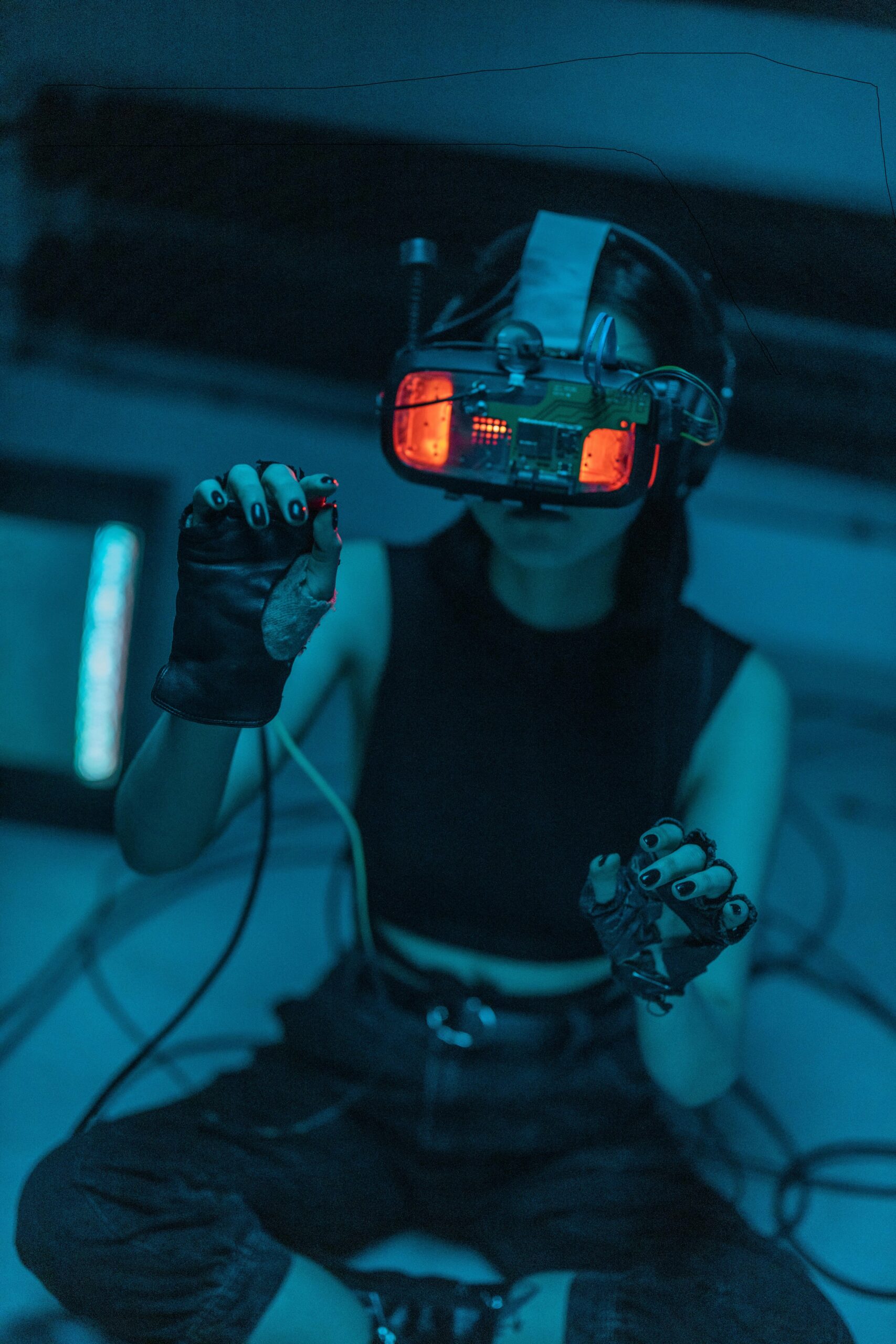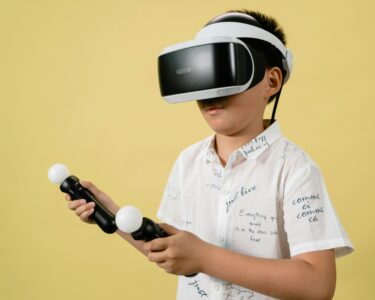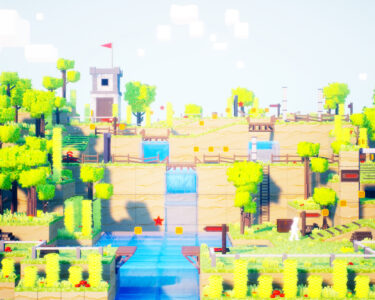Metaverse Gaming
Imagine stepping into a world where reality blurs with imagination. Where you can explore vast digital landscapes, battle mythical creatures, or even build your own virtual empire—all from the comfort of your living room. Metaverse Gaming, the next evolution in the gaming industry that promises to redefine how we play, interact, and experience entertainment.
The metaverse is not just a buzzword; it’s a revolutionary concept that combines virtual reality (VR), augmented reality (AR), blockchain, artificial intelligence (AI), and more to create a seamless, immersive digital universe. We’ll dive deep into the world of metaverse gaming, exploring how it’s changing the gaming landscape, the technologies driving it, and what the future holds for this exciting frontier.
How the Metaverse is Changing Gaming
The metaverse is transforming gaming from a passive experience into an interactive, immersive, and social adventure. Here’s how:
- Immersive Gameplay: Unlike traditional gaming, metaverse gaming allows players to step inside the game world using VR and AR technologies. You’re no longer just controlling a character; you are the character.
- Player-Driven Economies: With blockchain and NFTs, players can own, trade, and monetize in-game assets, creating real-world value from virtual items.
- Social Connectivity: Metaverse games are designed to be social hubs where players can interact, collaborate, and build communities in real-time.
- Endless Possibilities: The metaverse is not limited by physical constraints. Game worlds can be infinitely expansive, offering limitless opportunities for exploration and creativity.
Key Technologies Behind Metaverse Gaming
The metaverse is powered by a suite of cutting-edge technologies that work together to create immersive and interactive experiences. Let’s break them down:
- 1. Virtual Reality (VR) and Augmented Reality (AR)
- VR creates fully immersive digital environments, while AR overlays digital elements onto the real world.
- Examples: VR headsets like Oculus Rift and AR games like Pokémon GO.
- These technologies are the backbone of metaverse gaming, providing the sensory immersion that makes the experience feel real.
- 2. Blockchain and NFTs
- Blockchain ensures transparency and security in transactions, while NFTs (non-fungible tokens) enable true ownership of digital assets.
- Players can buy, sell, and trade unique in-game items like skins, weapons, and even virtual real estate.
- Example: Axie Infinity, where players earn cryptocurrency by playing the game.
- 3. Artificial Intelligence (AI)
- AI powers intelligent NPCs (non-player characters), dynamic game environments, and personalized gaming experiences.
- AI tools like procedural generation can create vast, unique worlds without manual input from developers.
- Example: AI-driven storytelling in games like AI Dungeon.
- 4. Cloud Computing
- Cloud technology enables seamless, lag-free gaming experiences by offloading processing power to remote servers.
- This allows players to access high-quality games on any device, from smartphones to VR headsets.
Real-Life Example: Turning Gaming into a Career
Take the story of a player in Axie Infinity who turned their gaming hobby into a full-time income stream. By breeding and trading Axies (NFT-based creatures), they earned enough to support their family during the pandemic. Stories like these highlight the real-world impact of metaverse gaming.
Popular Metaverse Games and Platforms
The metaverse gaming ecosystem is already thriving, with several games and platforms leading the charge. Here are some of the most popular ones:
| Game/Platform | Description | Key Features |
| Decentraland | A virtual world where players can buy, sell, and build on virtual land. | Blockchain-based, player-owned economy. |
| Roblox | A platform where users can create and play games designed by other users. | User-generated content, social interaction. |
| The Sandbox | A voxel-based gaming platform where players can create and monetize assets. | NFT integration, creative freedom. |
| Axie Infinity | A blockchain-based game where players collect, breed, and battle fantasy pets. | Play-to-earn model, NFT-based assets. |
| Fortnite | While not fully a metaverse game, Fortnite hosts virtual concerts and events. | Social hub, cross-platform play. |
The Role of NFTs and Virtual Economies
NFTs are revolutionizing metaverse gaming by introducing true ownership and monetization opportunities. Here’s how:
- Ownership of Digital Assets: Players can own unique in-game items, from weapons to virtual real estate, as NFTs.
- Play-to-Earn Models: Games like Axie Infinity allow players to earn cryptocurrency by playing and trading assets.
- Interoperability: NFTs can be used across different games and platforms, creating a unified digital economy.
Interactive Poll: What Excites You Most About Metaverse Gaming?
We want to hear from you! What excites you most about metaverse gaming? Is it the immersive VR experiences, the play-to-earn models, or the social interactions? Let us know in the comments below!
Social Interaction and Community Building in Metaverse Games
One of the most exciting aspects of metaverse gaming is its emphasis on social interaction. Players can:
- Connect with Friends: Meet up with friends in virtual worlds, attend events, or explore together.
- Build Communities: Join guilds, participate in forums, and collaborate on in-game projects.
- Attend Virtual Events: From concerts to conferences, the metaverse is becoming a hub for social gatherings.
Challenges and Concerns in Metaverse Gaming
While the metaverse holds immense potential, it’s not without its challenges:
- Technical Limitations: High hardware costs and the need for robust internet connectivity can be barriers to entry.
- Privacy and Security: With increased data collection, protecting user privacy is a major concern.
- Regulatory Issues: The legal framework around NFTs and virtual economies is still evolving.
- Addiction and Mental Health: The immersive nature of metaverse gaming raises concerns about addiction and its impact on mental health.
Fun Fact: Did You Know?
The first virtual real estate sale in Decentraland was for $20,000. Today, some plots sell for millions!
Quiz: What Type of Metaverse Gamer Are You?
Quiz: What Type of Metaverse Gamer Are You?
Take this fun quiz to find out if you’re an Explorer, Builder, or Competitor in the metaverse gaming world!
Future Trends in Metaverse Gaming
The future of metaverse gaming is bright, with several trends poised to shape the industry:
- Hyper-Realistic Graphics: Advances in AI and rendering technologies will make game worlds indistinguishable from reality.
- Cross-Platform Play: Seamless integration across devices, from VR headsets to smartphones.
- AI-Driven Personalization: Games will adapt to individual players’ preferences and playstyles.
- Expansion of Virtual Economies: More games will adopt play-to-earn models and NFT integration.
How to Get Started with Metaverse Gaming
Ready to dive into the metaverse? Here’s how to get started:
- Choose Your Platform: Decide whether you want to explore blockchain-based games like Decentraland or user-generated platforms like Roblox.
- Invest in Hardware: A VR headset or a powerful gaming PC can enhance your experience.
- Learn About NFTs: Familiarize yourself with blockchain and NFTs to take full advantage of virtual economies.
- Join Communities: Engage with other players on forums, Discord, or in-game to learn the ropes.
Behind-the-Scenes Insight
Did you know that AI tools like procedural generation can create an entire game world in minutes? Developers use these tools to build expansive environments without spending months on manual design.
Procedural Generation
- Procedural generation is an AI-powered tool that automates the creation of game content, such as landscapes, levels, and characters, using algorithms.
- It enables developers to build vast, unique, and dynamic game worlds without manual design, saving time and resources.
- Popular games like Minecraft and No Man’s Sky use procedural generation to create endless, explorable environments.
- This tool enhances creativity by generating randomized yet coherent content, ensuring no two player experiences are the same.
- Procedural generation leverages AI techniques like noise functions, fractals, and rule-based systems to produce realistic and immersive designs.
- It is widely used in open-world games, roguelikes, and simulations to deliver scalable and replayable content.
- By reducing the need for manual input, procedural generation allows smaller teams to compete with AAA studios in game development.
- The tool also supports adaptive storytelling, where game narratives evolve based on player actions and choices.
- With advancements in AI, procedural generation is expanding into virtual reality (VR) and metaverse gaming, creating lifelike, interactive worlds.
- As a game development innovation, procedural generation is revolutionizing how games are designed, offering limitless possibilities for players and developers alike.








